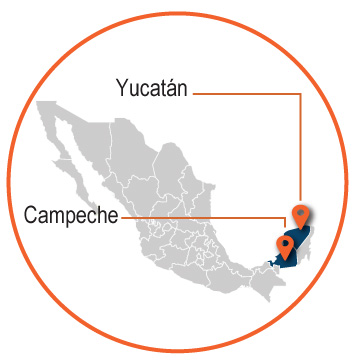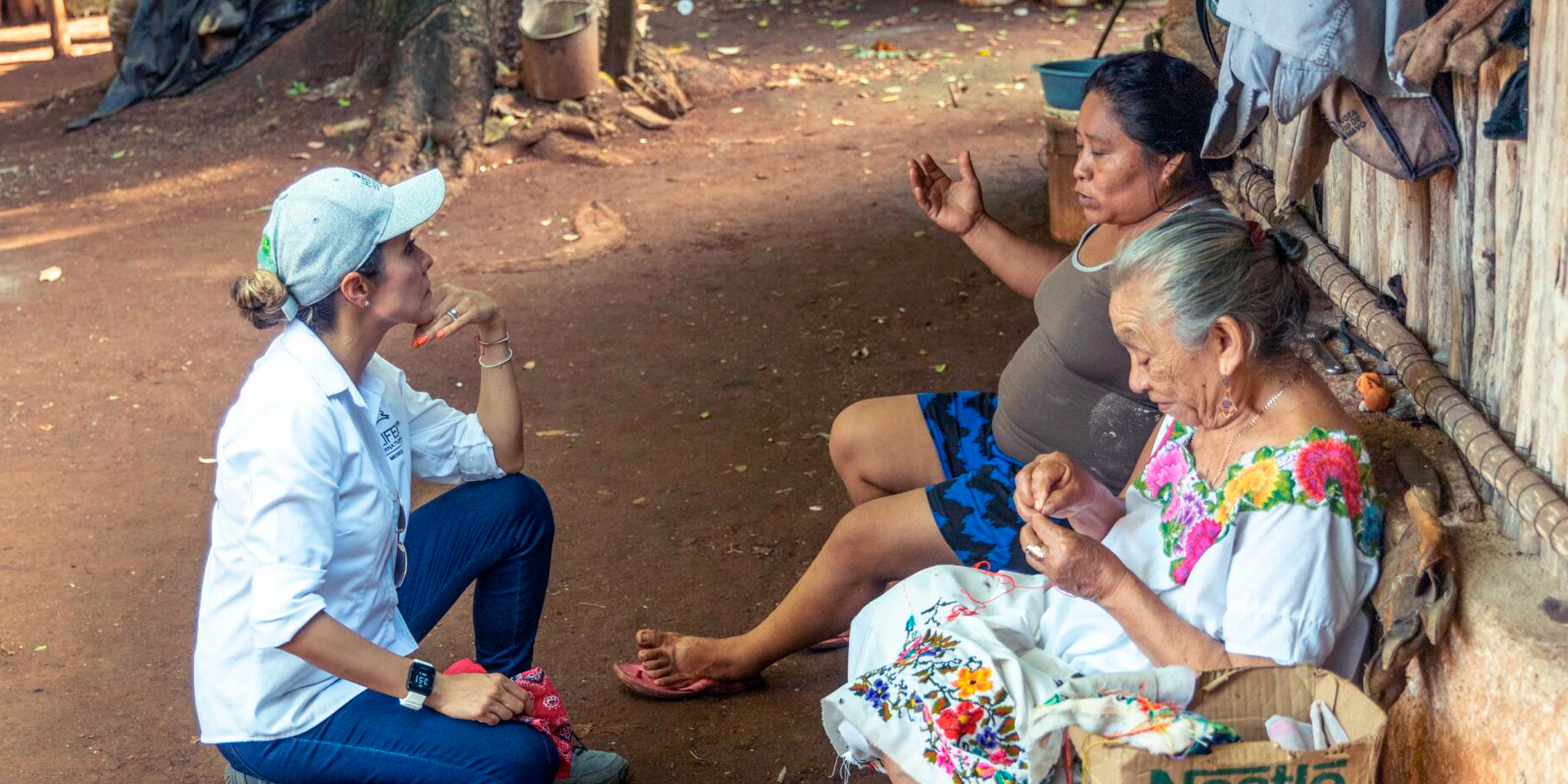Milpa for Life
SP Rural Roots
Program or project working areas

Yucatan and Campeche
Program or project value chains

Milpa, poultry, beekeeping and Mexican creole pigs
Overall Objetives
With support from the John Deere Foundation, Heifer International will implement the Milpa for Life project, which will work with 2,700 small-scale farming families (10,800 individuals) in Yucatan and Campeche, Mexico, to increase income, milpa productivity and land under sustainable management. Milpa for Life will use a conservation agriculture approach to increase productivity in the traditional milpa system (maize, beans and squash), improving household nutrition and income, and contributing to ecosystem and climate change resilience. Farmers will diversify with poultry, beekeeping and Mexican creole pigs to improve the family’s economic and nutritional well-being. Through the project, farmers will access local markets and inclusive value chains that will increase profits and sustainability. We will work to put small-scale farming families on the path to achieving a sustainable, dignified income.
PROJECT GOAL:
The Milpa for Life project will impact 10,800 people (2,700 small-scale farming families, including 1,350 families benefiting from the Chain Pass®) to:
- increase their incomes by at least 19% 2.
- Increase milpa productivity by at least 41% 3.
- Increase the amount of land under sustainable management by 540 hectares (1,335 acres) among participating farmers.
EXPECTED RESULTS:
– Improve the competitiveness of family farming.
– Improve the sustainability and resilience of smallholder farming families.
– Improve access to local markets and inclusive value chains for smallholder farming families.
THEORY OF CHANGE:
Small-scale farming families, including women and youth, who improve the competitiveness of their agricultural production through conservation agriculture practices and diversification, strengthen social capital, and access inclusive markets to sell their products will increase their milpa productivity, income, land under sustainable management, and resilience.

Project period (calendar years)

October 2021 to October 2024
Number of target households

2700 households (10,800 individuals)
Project donor

Summary of project successes to date
During Year 2 (November 1, 2022, to October 31, 2023), the project made significant progress in milpa productivity and land under sustainable management as farmers improved their knowledge and application of climate-smart agricultural practices. Milpa-only cumulative income and cumulative income from diversification activities (hens, pigs, or bees) made significant progress as families diversified their food production and accessed local markets. Social capital among smallholder farmers was strengthened as a basis for project consolidation and scale-up during the third year:
- We supported 8,780 out of 10,800 (81.3%) direct and indirect individuals targeted for the project’s life (2,195 out of 2,700 smallholder families, 78.6% led by men, 21.4% by women, and 2.4% by youth aged 18-24).
- We increased milpa productivity by an average of 149% (940 kg) from 630 kg/Ha in cycle 2021 (Baseline) to 1,100 kg/Ha in cycle 2022 (Midterm evaluation) and 1,570 kg/Ha in cycle 2023 (Outcome monitoring). The Life of Project´s goal of a 41% (260 kg) increase in milpa productivity was exceeded.
- We increased the income-only milpa by 38% from an average loss of -$25 per hectare (Baseline) to $560 in cycle 2022 (Midterm evaluation) and $602 in cycle 2023 (Outcome monitoring). The Life of Project´s goal of a 19% ($317) milpa-only income increase was doubled. Milpa-only generated an additional income of $627, which contributed to closing the living income gap by an average of 24% (the Living Income Benchmark in the region is $4,176 per year while a family has an annual income of $1,585 (Baseline, May 2022), this represents a gap of $2,591).
- We increased the cumulative income from milpa and diversification activities (hens, pigs, or bees) by an average of $716 (43.3%), which represents $42 (2.3%) above the Life of Project’s goal of 41% ($674).
- Milpa + hens income increased by an average of $1,051, which contributed to closing the living income gap by an average of 40%. Diversification with hens contributed an average of $450 from February 2023 to January 2024, as the hens were delivered in batches (December 2022, February, and April 2023).
- Milpa + bees income increased by an average of $1,083, which contributed to closing the living income gap by an average of 42%. Diversification with bees contributed an average of $482 in Year 2 despite a decrease in honey prices in 2023.
- Milpa + pigs income increased by an average of $913, which contributed to closing the living income gap by an average of 35%. Diversification with Mexican creole pigs contributed an average of $311 from July 2023 to January 2024, as the first batch from December 2022 completed the first reproduction cycle.
- We reached 521 (96%) out of 540 hectares planned for the Life of Project that are managed under sustainable agricultural practices.



